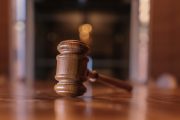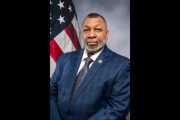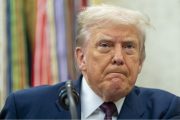In the aftermath of the October 1 shootings at Umpqua Community College in Roseburg, Oregon, that resulted in the deaths of 10 people, including the shooter, the predicable calls for more gun control came from those on the Left. However, many of those calling for anti-gun measures such as universal background checks, gun registration, and bans on “assault weapons” ignore the fact that practically all mass shootings like the one in Oregon have taken place in “gun-free” zones.
This point was made in several articles written recently by knowledgeable authors who are experts in the area of guns and crime.
One of these writers, John R. Lott Jr., is the president of the Crime Prevention Research Center and the author of More Guns, Less Crime: Understanding Crime and Gun Control Laws. In an October 7 article posted by the Philadelphia Inquirer, Lott noted that the gun-control law that President Obama and fellow Democrats have constantly promoted wouldn’t have stopped the shooting at Umpqua Community College — where expanded background checks have been in place since August — nor would it have stopped any of the other mass public shootings that have occurred during Obama’s presidency.
Lott made the additional point that practically all mass public shootings take place in what are deemed “gun-free zones,” including the Oregon shooting. Noted Lott:
If the media more regularly reported when a shooting occurs in a gun-free zone, more people would realize that gun-control laws don’t deter criminals who are looking for select targets where people can’t fight back. More Americans would come to feel that gun ownership makes them safer.
While acknowledging that Oregon law does allows those with concealed handgun permits to carry their weapons on school property, Lott noted that this right is largely negated by the schools’ practice of placing weapons bans in both faculty and student handbooks. This disarmament is practiced so fanatically that Umpqua president Rita Calvin will not even let the college’s security guards carry guns.
Lott concluded, “What all these rules mean is that no potential victims — students, faculty, or those unaffiliated with the college — were able to defend themselves in the classroom where the attack occurred.”
A similar point was made in an October 7 article in the Washington Times by J. Kenneth Blackwell, who is a former Ohio secretary of state and mayor of Cincinnati, and is a senior fellow and policy board member of the American Civil Rights Union. Blackwell referred back to a study released by Lott’s Crime Prevention Research Center last year, indicating that 92 percent of mass shootings since 2009 have taken place in designated gun-free zones.
Blackwell offered his explanation for why this holds true:
Mass shootings are committed by mentally ill people to achieve a form of immortality, or by political zealots to terrorize the public. They know the more they kill, the more publicity they’ll get. They also know the only way they will be stopped is by a good guy with a gun, so they choose to attack in places where they know nobody else will be armed.
In another article published by the Chicago Tribune on October 4, Erich Pratt, the director of communications for Gun Owners of America, reminded readers that every public mass shooting since 1950, except for two, has taken place in a gun-free zone. In addition to the Umpqua College shooting, he cited those in the Lafayette, Louisiana, theater; the Charleston, South Carolina, church; and the military recruiting center in Tennessee. Pratt noted that guns were outlawed at all these locations, but the killers ignored the bans.
In contrast, Pratt asked readers to consider a representative list of the locations where armed citizens have stopped shooters over the past year: the La Raza bar in Youngstown, Ohio; a car service driver defending himself on a street corner in Chicago; at the Falah barber shop in Philadelphia; Pastor Terry Howell Sr. at Living Water Fellowship church in Osceola County, Florida; at the Vaughan Foods food processing plant in Moore, Oklahoma; and by an armed doctor, Lee Silverman, at Mercy Fitzgerald Hospital in Darby, Pennsylvania.
Pratt also offered as an example an attempted mass shooting in 2012 at the Clackamas mall in Oregon. When a gunman began killing, a man named Nick Meli drew his concealed firearm and pointed it at the gunman, scaring him into taking his own life.
Noted Pratt, “Nick Meli was breaking the ‘no guns policy’ at the mall, but there are many survivors who are glad he did. Gun-free zones are the problem. Let’s repeal them.”
In yet another article questioning the wisdom of gun-free zones, published in the Eurasia Review for October 8, Jim Kouri, a board member of the National Association of Chiefs of Police, quoted John Snyder, who serves on the advisory boards of the National Association of Chiefs of Police and the American Federation of Police and Concerned Citizens.
Snyder pointed out that Umpqua Community College was known to everyone as a facility that prohibited firearms on campus. Said Snyder:
Gun rights folks have been blasting gun free zones for years. The mass shootings at the Umpqua Community College in Oregon [proves] how nuts gun free zones really are. The anti-gun policy in Oregon prevented any lawful armed citizen from stopping the killing. One teacher with one gun could have cut the carnage.
Snyder did not pull any punches in his assessment of those who believe that prohibiting guns will deter mass killings:
Anyone with an ounce of common sense can see that someone willing to commit a crime like murder, in this case multiple murders will not think twice about it because of a law or regulation against guns. The law-abiding individual who does obey the policy against guns is left at the mercy of the murderer. Unfortunately, many policy makers don’t have even an ounce of common sense. They don’t have any.
Of course, there is much more to the debate about the right to keep and bear arms than whether or not guns keep us safe from half-crazed mass murderers. The Second Amendment was ratified in 1791, just 16 years after British soldiers attempted to seize the arms reportedly stored by the Massachusetts militia at Concord. This citizen militia, organized to defend the colonists against the tyranny of the British crown, was what the authors of the amendment had in mind when they used the term “militia” in conjunction with the right to keep and bear arms.
While events such as the recent tragedy in Oregon make us aware of the immediate ill effects of denying our citizens the right to defend themselves, it is also important to keep the big picture in mind — the right to defend not only our lives, but our freedom, as well.
Related articles:
Where Did Sydney Jihadi Shooter Get a Handgun in “Gun-free” Australia?
Behind Chattanooga: Radicalization, Gun-free Zones, and U.S. Foreign Policy
California Shooting: The Missing Element
Another School District Arms Its Teachers
After Crushing Defeat, Obama and Gun Grabbers to Revive Effort
Connecticut Lawmakers to Infringe Further on Citizens’ Gun Rights
Facing Firm Opposition, Obama Renews Assault on Gun Rights
False Solutions to Gun Violence
South Dakota Adopts Law Allowing Armed Teachers at School
Florida High School Student Suspended for Disarming Gunman
States Aim to Nullify Obama Gun Control
Kentucky Sheriff Vows to Protect Residents from Obama Gun Control




